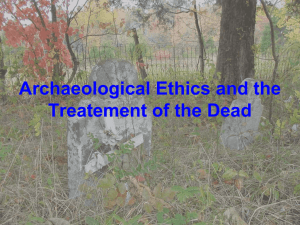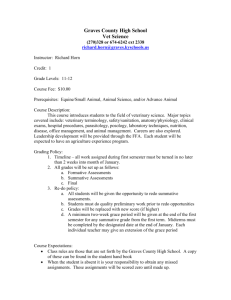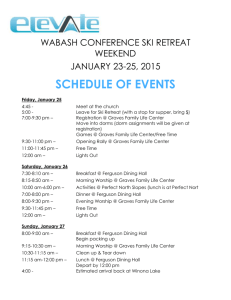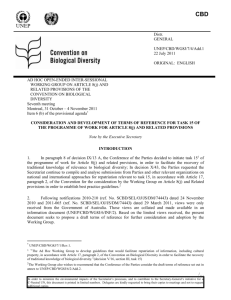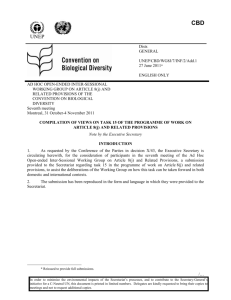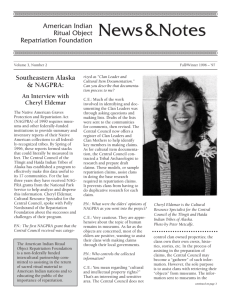File
advertisement
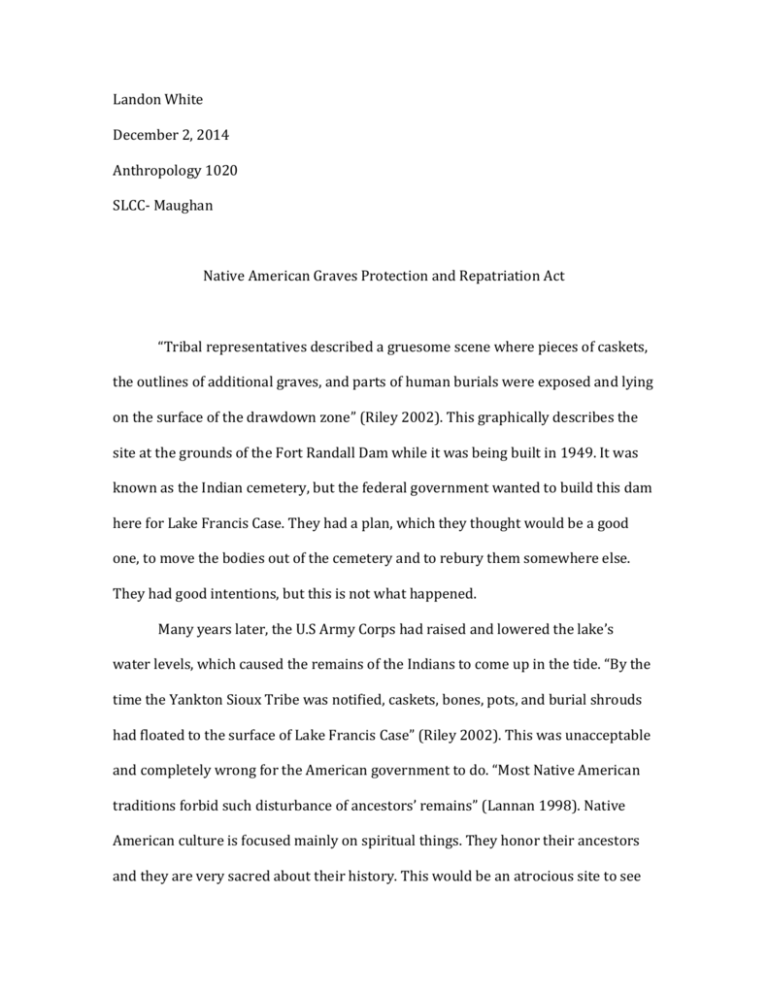
Landon White December 2, 2014 Anthropology 1020 SLCC- Maughan Native American Graves Protection and Repatriation Act “Tribal representatives described a gruesome scene where pieces of caskets, the outlines of additional graves, and parts of human burials were exposed and lying on the surface of the drawdown zone” (Riley 2002). This graphically describes the site at the grounds of the Fort Randall Dam while it was being built in 1949. It was known as the Indian cemetery, but the federal government wanted to build this dam here for Lake Francis Case. They had a plan, which they thought would be a good one, to move the bodies out of the cemetery and to rebury them somewhere else. They had good intentions, but this is not what happened. Many years later, the U.S Army Corps had raised and lowered the lake’s water levels, which caused the remains of the Indians to come up in the tide. “By the time the Yankton Sioux Tribe was notified, caskets, bones, pots, and burial shrouds had floated to the surface of Lake Francis Case” (Riley 2002). This was unacceptable and completely wrong for the American government to do. “Most Native American traditions forbid such disturbance of ancestors’ remains” (Lannan 1998). Native American culture is focused mainly on spiritual things. They honor their ancestors and they are very sacred about their history. This would be an atrocious site to see all of the people that have been buried in the past and laid to rest, just for them to be lying around, unearthed by people who do not respect remains as much as the Native Americans do. This is when the Native American Graves Protection and Repatriation Act (NAGRPA) came to be. “NAGRPA is federal law aimed at protecting Native American gravesites and human remains from desecration. It also provides a way for Native American tribes to recover ancestral remains from federally-funded museums, agencies, and institutions (Midler 2011). The problem with this is that Native Americans are able to recover some, but not all of the remains. If the remains are culturally unidentifiable with any of the regular tribes, then the museums are able to keep them. This has caused much conflict with both the Native Americans and the anthropologists who want to study the remains. Even though NAGPRA was passed, it still took anthropologists a while to return the remains the Native Americans. For example, “in 1998, a thirty-year drama came to an end when anthropologists at the University of Nebraska agreed to return the skeletal remains of 1702 Native Americans to a coalition of fifteen modern tribes” (Niesel 2011). Thirty years is entirely too long to wait for selfish people who have been studying the remains that are sacred to a culture to return to the rightful owner. It should not have been a question as to who had the rights. The remains needed to be reburied in a sacred place to where they could be honored and laid to rest. Studying bodies is important for scientific and historical documenting, but it is not as important as the proper burial of many people who had lived before. Even though they had been gone for a long time, it is still no excuse that they should not be buried in the ground as opposed to being studied. “To be in compliance with NAGRPA, federal agencies and museums are required to undertake an effort to return Native American skeletal remains to a culturally affiliated tribe” (Niesel 1998). Not only should museums try to return these remains and artifacts because of the law in place, but they should do it because it is the ethical thing to do. They need to take into consideration how they would feel if someone else dug up the remains of their ancestors and loved ones only for the element of science testing. Native Americans have every right to the remains and artifacts. “NAGPRA is important human-rights legislation, designed first and foremost to address the historical inequities created by a legacy of past collecting practices; the continual disregard for Native religious beliefs and burial practices; and a clear contradiction between how the graves of white American and graves of Native Americans have been treated” (Daehnke and Lonetree 2011, page 87). This statement could not be more correct. It comes down to the simple fact that the Americans did not care about the sacred culture of the Native Americans, simply because it was not what they believed and it was not their ancestors that were involved. This is an error in the society of Americans and their attitudes toward Native Americans. Because they were so different from Americans, no one took into account their feelings or beliefs in any situation. They stole their land, killed their people, and uncovered their dead. This was due to certainty that the American race was better and more advanced than the Native Americans. Certainty is the most detrimental thing in history. If one is so sure of themself, they are blinded to other cultures, people, and beliefs, which causes them to act in stupidity and carelessness. Most anthropologists will disagree with NAGRPA because of the archaeological findings to be able to study Native Americans. There are many things that they can learn from the remains and artifacts that were buried. “Examples of application of our analyses include determination of biological relationships which support Indian land claims and understandings of prehistoric disease which could alleviate suffering among present-day Native Americans” (White 2000, page 325). Both of these things are very advantageous to learn about for the culture of the Native Americans. If Native Americans are willing and interested in this, they are able to donate their artifacts and remains to museums and scientists so that such discoveries can be made. NAGRPA gave them the ability to choose whether or not they would want to do something like this. It should be their choice and no one else. Only Native Americans know about their culture, history, and their beliefs, so the tribes can decide whether or not they would like to donate artifacts for the biological anthropology cause. Bibliography Daehnke, Jon, and Amy Lonetree. "Repatriation in the United States: The Current State of the Native American Graves Protection and Repatriation Act." (2011): 87. Web. 28 Nov. 2014. Lannan, Robert. "Anthropology and Restless Spirits: The Native American Graves Protection and Repatriation Act, and the Unresolved Issues of Prehistoric Human Remains.” (1998): 1. Web. 28 Nov. 2014. Midler, Aaron H. "The Spirit of NAGPRA: The Native American Graves Protection and Repatriation Act and the Regulation of Culturally Unidentifiable Remains.” (2011): 1. Web. 28 Nov. 2014. Niesel, Zoe E. "Better Late Than Never? The Effect of the Native American Graves Protection and Repatriation Act’s 2010 Regulations.” (2011): 1. Web. 28 Nov. 2014. Riley, Angela. "Indian Remains, Human Rights: Reconsidering Entitlement Under the Native American Graves Protection and Repatriation Act.” (2002): 1. Web. 28 Nov. 2014. White, T. D., and Pieter A. Folkens. Human Osteology. San Diego: Academic, 2000. Print.




